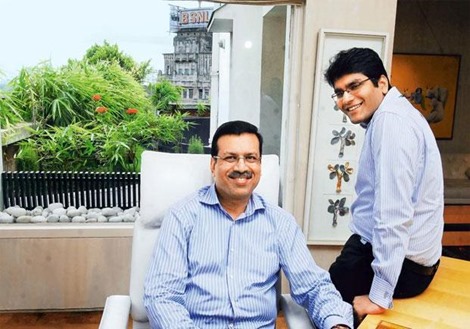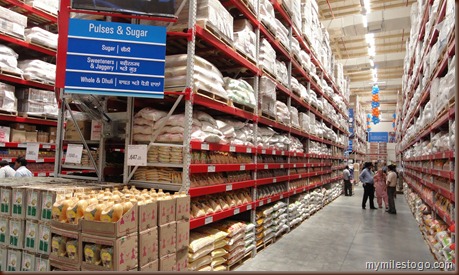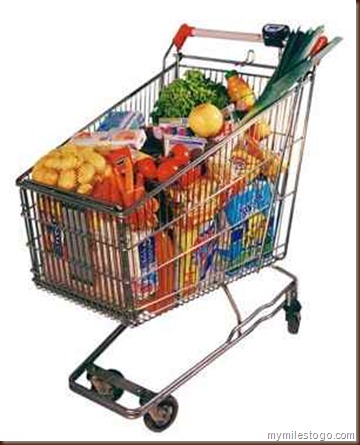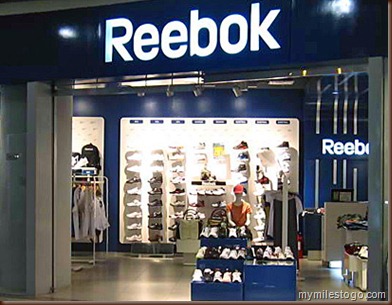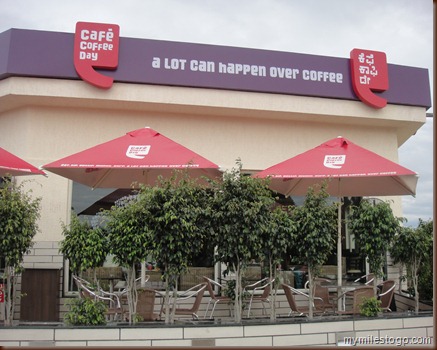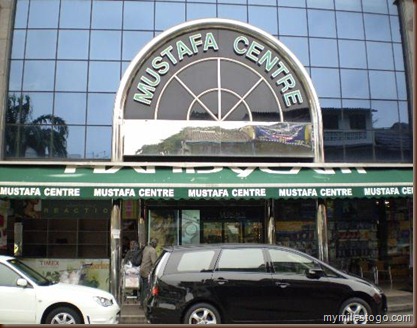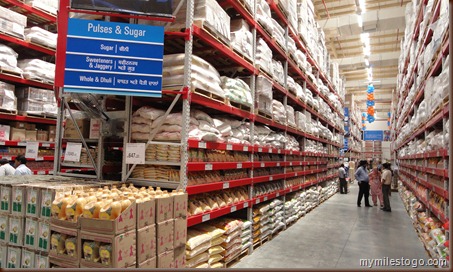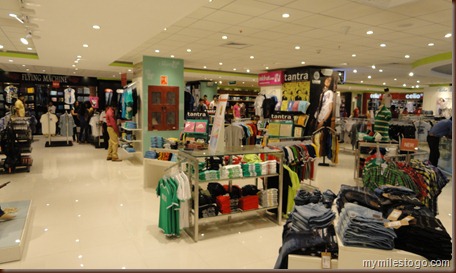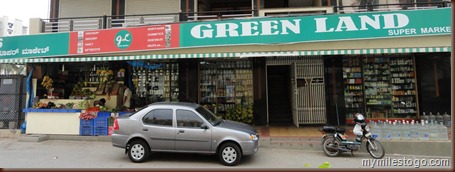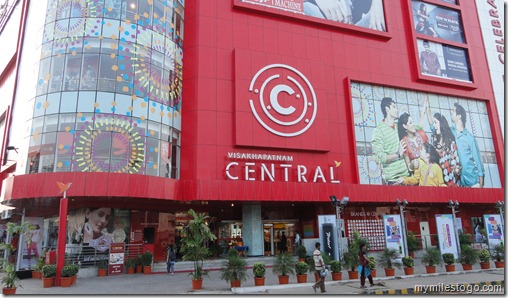20 November, 2016
Why I suspended Oyethere Delivery!
12 June, 2016
Is it Game Over for Malls?
13 May, 2013
Shaswat Goenka–Hearlding new frontiers at Spencers Retail
After dabbling with various sectors in the Rs 14,000-crore RP-Sanjiv Goenka group for about a year, Shashwat Goenka, 23, son of group chairman Sanjiv Goenka, has taken charge of Spencer's, the retail chain, from April 1. In an interview with Namrata Acharya & Ishita Ayan Dutt of Business Standard, he talks about his personal mandate and the road map for the Rs 1,400 crore business. Edited excerpts:
What goal have you set for Spencer's?
I assumed the role of sector head from April 1. What is most important at this point in time is profitability; that's where we are all trying to go. That will be the focus for the coming year and the year after. Spencer's is aiming to deliver Ebitda (operating earnings) breakeven at a company level in the third quarter of 2013-14 and be Ebitda-positive on a full year basis in 2014-15. That's the overarching short-term goal.
Spencer's has missed its breakeven deadline quite a few times. What makes you think you would be able to achieve it?
Well, each time we have done better. We have achieved breakeven at store-level but company level is what we want to achieve.
How do you plan to get there?
We want to increase our footprint. We will go up to two million sq ft from 900,000 sq ft currently and will expand in the north, east and south over the next four to five years.
We will achieve it over the next few years. The other important thing, obviously, would be operational efficiency.
In terms of offering, we would look at increasing international foods and regional foods. Value-added fresh is one of the areas we would like to explore.
Doesn't the fresh segment have one of the lowest margins?
We have very good margins in the food business compared to our competitors. Margins in apparel are obviously much higher but our margins in foods are good.
Any new formats for Spencer's on the anvil?
We haven't thought of any. We want to grow in hypermarkets.
Is the rationalisation process for Spencer's over?
Last year was the rationalising and consolidation process. We have exited Pune. In the past two years, we have closed 65 stores. Now, we want to start growing and in the hypermarkets.
Earlier, we had hyper, super, daily and express stores. Now, we have hyper and dailies and a few of the old express stores are still functioning.
Why did you exit Pune?
We wanted to become stronger where we are. So, we wanted to focus on the north, south and east. After we get that strong, we will revisit the west.
Why do you think the response from foreign retailers has been muted, after FDI (foreign direct investment) has been cleared?
I think people are interested. They just want to figure it all out before they come in.
Do you see foreign retailers as a threat to Spencer's?
Walmart and its likes coming in will help us. We can learn a lot from them. Back-end infrastructure will improve. There are basic infrastructure issues in India, like roads. Also, cold chains or dairy chains, for instance, are not very well developed.
A lot of options were being explored at the back-end by retailers. Any progress on that front?
We are open to FDI at the back-end but we haven't been approached by anyone.
Spencer's was exploring the IPO (public share offer) option. When is it likely?
That's something we definitely want to do but right now, the focus is on profitability.
Would you look at getting into the cash and carry format?
We have not looked at it. We want to be profitable and then explore other things.
18 September, 2012
The Retail FDI brouhaha!
Popular Media is in full force discussing the pros and cons of opening up FDI in multi-brand Retail, announced by the Manmohan Singh led Union Government of India on 14 Sep. 2012. Finally, it happened. Rather, it had to. On 9 Jan 2012, the same Government allowed 100% FDI in Single Brand Retail, acting as a precursor and paving the way for the current policy decision. The UPA Alliance which leads a multi-party coalition Government has finally had the spine to push this through, alienating some of its own partners putting its Government in jeopardy. With the current policy in place, it means that multi-national Retailers such as Wal-Mart, Carrefour, Tesco and their likes can invest in India on their own as well as in Joint Ventures with Indian partners or Business Houses. But, there is a catch. FDI in Retail has been made a State Subject which means that each State has to provide an approval for each partnership that is proposed and to be allowed to be operated within its precincts. This is a bit absurd, to say the least. The policy states that over 30% of input must be locally sourced, which in my opinion is a very good thing for Indian traders and businessmen.
(Suggested Reading: Starbucks in India)
So, lets see what’s in store for consumers with multi-brand FDI in Retail;
Pricing
By allowing FDI in Multi-brand Retail, the end consumer is expected to get better pricing for most products. In case of Agri-products, even the Farmers are expected to command a better pricing since they would be dealing directly with the Retailers. Since these Retailers purchase large quantities of products from FMCG companies directly, they would be able to get better margins and would thereby pass them on to Consumers. This is largely in case of Grocery Retailing. It would be similar in Electronics Retail too. Fashion Retailers who run a chain of stores would be able to procure their merchandise at better rates from manufacturers and would again pass on the benefits to their customers. This is one important area where everyone gains!
Assortment
At the moment, products manufactured / produced in one part of the country are not available in many other places. This is mainly because of Supply Chain Constraints. Multinational Retailers don’t just bring big bucks, but also the knowledge and know-how of how to do things better. This, would be an important part of the proposed Retail expansion of Organized Retail, with traders getting more scope for their products. Customers will get a wider variety and range than before which will throw open new options and opportunities for consumption.
Generate Employment
Retail trade as a whole employs about 8% of the population in the country, directly and indirectly. These people are paid a fixed amount as compensation and do not benefit with other Government schemes such as Pension Fund, Provident fund, Employee State Insurance, Gratuity, etc. Modern Retail already provides most of these benefits to its staff. With more and more Organized Retail Stores opening up, it is expected to generate higher employment across the country.
(Suggested Reading: Retail Staffing)
Credit availability
One of the popular qualms is that the neighborhood Kirana provides free credit which the Organized players may not be able to and would hence lose out on. This is incorrect. Spending through credit/debit cards has grown over 6 times in the past decade within Modern Retail. Customers are happy to swipe their cards even for smaller transactions, more for ease than anything. Retailers like Shoppers Stop and Big Bazaar have co-branded cards, thus exciting customers with higher reward points for purchases.
Recreational Spaces
Modern Retail is not just about shopping in a comfortable environment but also includes a lot of fun and entertainment for families. These large stores have F&B facilities, gaming zones, etc. where children can unwind while parents are shopping. It is also an excuse for families to go window-shopping and end up buying something or the other!
And here is why a few segments of the people are against it;
Kiranas would shut-shop
The oft-heard uproar is that Kiranas would shut-shop due to the emergence of big-box multi-national Retailers. This is untrue. Kiranas have their basics right, starting with Location, Pricing, Assortment, Credit to Customers, to name a few. Large Retailers take time to crack even some of these points. Having present in India for over a decade, Domestic Retailers such as Foodworld, Spencers, Reliance Fresh, More, etc. haven’t got their act correct, I would say. If they have a good location, then their pricing is (obviously) not so competitive and even if they attempt to, then they are in the Red. Merchandising is one of the most difficult paradigms of the Retail business coupled with severe Supply Chain constraints in the Indian scenario. Given these, it would be almost impossible for large Retailers to succeed, whether they are of Indian origin or International.
(Suggested Reading: Store Opening )
Secondly, most of the Kirana stores (Mom-and-Pop-Stores) are first generation entrepreneurs in their 40s and 50s who started off their own little corner stores during the 80s and 90s after Liberalization. Some of them include women, who run petty shops in neighborhoods to support their family, sometimes as a main source of income and at times as alternate, additional income. Their children, most of whom are undergoing good education are moving out of the family businesses. Many youngsters aspire to become Diploma holders, Engineers, MBAs, etc. across a wide range of subjects and are hence not looking forward to continue the family’s traditional Kirana business. As it is, many shop owners are not looking at continuing their petty businesses for the coming generations. So I wonder why this hue and cry.
Many Kiranas have already embraced modern Retail. For example, Metro AG which set shop ten years ago in Bangalore now has half a dozen stores spread across the country. Most of its customers are traders and merchants who buy from Metro and sell to end-users (customers). Wal-Mart set up a JV with the Bharti Group a few years back and runs Cash & Carry Stores in Punjab, Haryana and Rajasthan. Its main focus is on Kiranas and Retailers to whom they sell stuff in tonnes! Even in big cities like Mumbai and Chennai, it is quite common to see Retailers shop at the likes of Reliance Mart and Big Bazaar, given the substantial savings.
Kiranas are a tough lot and represent the well-entrenched Indian Entrepreneurship and cannot be unseated so easily. Long Live Kiranas!
(Suggested Reading: David Vs. Goliath)
24 May, 2012
The Dangerous Minimum Guarantee Model in Retail Expansion
Aggressive store expansion means two things – heavy capital expenditure and lots of people to manage the stores. Every brand worth its salt wants to boast an extensive Retail store network across the length and breadth of the country no matter what the store level EBITDA is. While there are various ways to expand its network, some of the commonly used ones by Retailers are Franchising (more on that in my next column) and CoCo – Company Owned Company Operated model. While Franchising could mean faster expansion, there are chances that the Retailer may lose control on the quality of customer experience among other things. The CoCo model is very expensive to scale-up unless backed by a solid VC / PE Firm. One of the other means to raise funds for expansion is through the Capital Market – recently Specialty Restaurants that runs the Mainland China, Oh! Calcutta, Sigree and other restaurants debuted their IPO, the first of its kind in the F&B Industry in India (while Jubilant Foods which runs Dominos Pizza in India is also listed, it is not in the Restaurant business but into Casual Dining). Retailers like Café Coffee Day, Dominos, Foodworld, Spencers, Zara, Tommy Hilfiger and many others have invested heavily on their own in terms of store expansion across the country, while others like McDonalds, Pizza Hut, Madura Garments, Reebok, Adidas, Benetton, Nilgiris, etc. have taken the Franchisee model.
There is another alternate model – One of the easiest ways that a few Retail Brands have taken to, which is known as the “Minimum Guarantee” model where in a Second Party is appointed to manage the store(s) on behalf of the company while the Retailer itself invests on the business. Let me explain this in detail. Assume that the store fit-out costs for a 1,000 sft store is Rs. 40 Lakhs plus stocks to the tune of Rs. 50 Lakhs, then the Retailer invests Rs. 90 Lakhs to set up the store and also bears the Security Deposit to the landlord (6 – 10 months’ monthly rent). Once the project work is completed, the store is handed over to a second party, also known as a Managing Partner or a Managing Franchisee who is responsible for the day-today upkeep of the store. All direct and operating costs such as manpower, electricity, rent and incidental costs are taken up by the Retailer and the Partner is also paid a lump-sum ranging from a few thousands to a couple of lakhs – just to operate the store everyday. The logic is, if there were to be an Area Manager to micro-manage the store (and a cluster of them in each city / region), then the costs would be substantially high. And hence the Managing Franchisee model. The partner also has sales based incentives, that is if the store achieves a set target, then he receives a further commission, usually as a percentage to sales. In many cases, the Partner leases his own property to the Retailer, which means the Rental income comes back to him! In a few cases, either the same partner operates through kith and kin or through friends and relatives who become partners! And then, there are incentives for introducing new partners and locations in other cities. This is indeed a vicious cycle.
In the name of faster expansion and quick growth, many Retail Brands have resorted to this practice. While there is nothing wrong in this approach, the Managing Partner usually gets the cake and eats it too. Without any investment, he has a full time job, a respectable retail profession and a handsome income too. While it is not clear whether the practice has been globally prevalent and if yes, from when – it is quite popular in the Indian Retail scenario over the past decade. While Retailers like Madura Garments have stuck to the tested Franchise model of “Buy and Sell” merchandise (that is the Franchise has to purchase all the merchandise with a small percentage of returns back to the company), others like Reebok, according to press and media releases in the recent past have opted the Management Partner model.
There is no correct or wrong way to expansion. As long as the means are ethical and law-abiding, there is no problem. But concerns arise when there is maniacal expansion with sometime, ulterior motives of helping / supporting some known people to become Management Partners. At the end of it, the Customer decides on the success or otherwise of the brand. And that’s what matters.
25 January, 2012
Retail Store Opening Time
I recently received an email from Reliance Mart that they would opening their stores at 8am! The email newsletter was a bit incomplete in most respects – it doesn’t talk of its existing store timing (including opening and closing) and the list of all stores or a contact number such as a Customer Care number or a Toll Free number. It is anybody’s guess why this particular retailer would want to open so early – given that it is a Hypermarket format. In the footer of the communication, the cities where they operate is mentioned, most of which are non-Metro cities, which I guess could be the main reason for this move. In metro cities, people (Read: consumers) leave to work by 8am and return back around 8pm, hence most of the modern shopping environments including Malls, Supermarkets, Hypermarkets and Specialty Retailers open their stores only by 11am. Also, this is a huge cost-saving for retailers – lower usage of electricity and other utilities; staff can work in a single shift; most importantly, it provides time to set-up the store in the mornings – stock fulfillments, “facings” of products on the shelves and a sound briefing session to the staff.
At Foodworld, (a Supermaket chain part of the erstwhile RPG Retail) when I used to work in Chennai 10 years ago, we experimented opening the store at 7am – really early by Organized Retail standards. But what we realised was that we built a strong loyalty among the local residents and the neighborhood. Customers started coming in early to pick up vegetables that would have landed fresh at the store; and along with bought a packet of bread and some milk. And a few other daily use things too! I remember, we used to interact with regular customers and they would feel happy to be at the store so early! I guess this is one area where Kiranas cleverly take a lead amongst Organized Retailers. A typical kirana store opens by 7am and starts brisk business early. And closes as late as 10.30 or even 11pm at times.
The Government’s rules and regulations are not helping Organized Retailers either. Law states that women employees (who contribute to a significant percentage of the work force in the front-end of Organized Retail in India) cannot work beyond 9pm and should be escorted back home by the employer. Almost no one follows this though, thanks to lax overseeing by the respective agencies and authorities. The retail stores cannot function beyond a certain timeline, which is 8.30pm in Kolkata, 9.30 pm in Chennai and so on. Recently, Star Bazaar, part of TRENT Retail (owned by the TATAs) and Total Hypermarkets, part of Jubilant Retail based out of Bangalore extended their store closing time to 12.00 midnight, a welcome move by regular customers who heaved a sigh of relief since they could comfortably shop during the late hours! Mustafa, a local retail giant in Singapore, for example, is open all night and sees regular customer flow all through! I was told that the contribution of business between 9pm and 8am is almost 20% since tourists hop by after the city closes down.
With FDI in single brand retail already in place, it is anybody’s guess if more and more Retailers would want to keep the stores open late night or open early since the International Giants might want to pump in more money and experiment if customers walk in late at night. While this may work for certain categories such as grocery, household, furniture, etc. it may be obvious that fashion is not something that could work. After all, that category of customers would we wining, dining and partying late night than shopping! Café chains such as Café Coffee Day, Barista, Costa, etc. keep their outlets open until late in the night while book store chains such as Crossword and Odyssey usually wind up early. The case may be a bit different at Airports, where a majority of International Travel happens during the night and therefore, most of the Retailers are open all through the day and night.
There are a few advantages for Retailers to have extended store opening time;
- Customer Service – During the lean hours, Retailers can provide better customer service, a typical measure to increase conversions
- Loyalty – Retailers could offer bonus loyalty points (if they are operating such a program) to those who shop during such a stipulated time
- Understanding Consumer Behavior – Since customers would be shopping under a more relaxed environment, they may tend to show a better behavioral pattern which may be useful to Retailers
- Targeted Promotions – Retailers and Brands could run specific promotions during such times to increase penetration of certain SKUs
The drawbacks though, would be;
- Increased Operating Costs – Retailers would have to shell out additional salaries to staff who work during such extended times as well as incur other overheads
- Sustenance – Such a move, if it is experimental only for a short while can dent the brand image of the retailer among customers, leaving them confused
- Managing the network – If the Retailer has stores across multiple cities, then it may be forced to maintain uniformity across all locations
Having said that, I believe there are hardly few Retailers who would want to try this venture. For, success is not something that comes without repeated attempts!
01 January, 2012
Retail in India–Way ahead for 2012
Organized Retail in India has come a long way over the past decade and 2011 was expected to change the wind towards the positive side, due to allowing FDI in Retail. Thanks to political unrest and the opposition parties claiming hoarse, FDI in Multi-Brand Retail has been put on hold (hope not shelved) while FDI in Single Brand Retail has quietly been allowed, atleast on paper. While a few International Brands such as Benetton, Tommy, Diesel, Esprit, etc. have been operating in India for many years now through Joint Ventures with Indian partners, a beeline of Brands wanting to enter India is expected in 2012 – a hope that many in Retail have been holding on for sometime now! The coming months are expected to be exciting times for our Industry and here’s a view on how this landscape would evolve;
Malls
From a lakh square feet to a million square feet in 10 years, modern shopping centers aka Malls have walked a long journey all these years. Today, Malls are not places for consumers to just shop but a generous mix of shopatainment – which includes Shopping, Dining and Entertainment. While there are over 200 operational malls today in the country, another equal number is expected to come up in the next few years. A number of mall projects which commenced during the slowdown in 2008 are ready for occupancy now and many are expected to launch this year.
Supermarkets
The neighborhood supermarkets have evolved the most, among all formats of Retail over the years. Size was always a concern for players like Spencer’s and More – getting it right was a challenge, either the stores being too big with empty shelves or too small with regular stock-outs. Many players have exited the marketplace while a few like Food Bazaar and Nilgiris (through franchises) are increasing their presence assuming scale-up would help them gain overall net margins which range in high single digits. This would be the first format, in my opinion that would straighten up – only serious players would exist and they would do a great job while many others would exit – hopefully this year.
Hypermarkets
With foreigner CEOs and advisors engaging the managements of Indian Retailers, it was widely believed that Hypermarkets must be large, really large like the ones in western countries.Thanks to some early learning, many players like Hypercity and Total have corrected their ways of working. Small is the new Big, with Hypers ranging from 20,000 – 45,000 in prime retail areas in multi-level locations compared to the earlier proposition of being over 60,000 sft – one single floor in suburban areas! Newer players especially multi-nationals like Tesco and Target are expected in this format in the coming year while existing players are planning massive scale-ups.
Department Stores
These large format stores, the blue-eyed ones due to their colorful appearance was and is expected to be the only ones to see some EBIDTA in their early years. That’s a boon and bane in a sense in this format. To ensure they attract high-spender footfalls regularly, they should turn their stocks quite often; that means having the right mix of merchandise is extremely important which is a direct impact of having high quality staff who can choose the right merchandise every consecutive season. This is a vicious cycle and players like Shoppers Stop, Lifestyle, Westside etc. have got it right while a few of them are still struggling to learn.
Specialty Retailers
Stand-alone specialty stores of international and even domestic brands are seeing dwindling numbers. The total number of stores that were being added year-on-year have reduced considerably. If it was 20 new stores and most being unprofitable four years ago, the numbers have reversed, thankfully. Most brands don’t talk about crazy numbers anymore, only well-merchandised stores and outlet level profitably.
QSRs and Food Retailing
It seems cooking and eating at home is a more expensive proposition these days thanks to high food inflation and going by the sales of pizza chains and fine-dine restaurants. While Dunkin Donuts is almost ready with its first outlet, Starbucks is slated to open quite soon too. Café Coffee Day will ad over 200 new cafes this year while Dominos and Pizza Hut will have company in California Pizza Kitchen and a few others. This would indeed be the most exciting format to watch indeed!
Kiranas
The unorganized retailer down the road doesn’t pay taxes or offer health benefits to employees; no one ever checks the quality or quantity of goods sold; BUT he is able to offer lower prices everyday to consumers with other additional benefits such as short-term credit and quick home delivery. Modernisation is the byword for the them and they are indeed giving a touch competition to the organized players.
E-Commerce
But the real competition, if not threat to all formats of retail in 2012 is going to be through E-Commerce. Sadly, many brands and retailers are not paying attention to the increasing internet user base – over 100 million as of 2011 compared to just three million in 2001. This has allowed fly-by-night operators to open websites that sell everything from toothpaste to watches, apparel to expensive jewelry! Most of them have no clue how e-commerce works and many are even buying merchandise and selling – something which goes against the fundamental philosophy of transacting online!
27 November, 2011
FDI in Retail–the saga continues!
It was a much-awaited, welcome move by the Cabinet of the Indian Parliament to allow 100% FDI in Single Brand Retail and up to 51% FDI in multi-brand retail on 24th Nov. 2011. A surprise announcement, given that the winter session of the Parliament is under progress, which hasn’t been functioning fully due to various issues in the fore. The announcement comes after two decades of reforms that started in 1991 and over 10 years of strong growth by the Organized players of the Retail Industry in India. The Left parties along with the main opposition party in the Parliament, viz., the BJP have been publicly protesting against the decision. One senior member of the party has announced that she will burn the Wal-Mart store if it opens anywhere and she is ready to court arrest for the same! Such has been the tensions on this topic for many years now. Even the general public (read: Consumers) have been left confused due to various approaches proposed by those who are for- and against allowing FDI in retail. The issue has been politicized more than it is, by a section of those who claim that allowing foreign retailers will harm the livelihood of small kiranas (mom and pop retailers) while another view is that it would create millions of jobs and would bring down food inflation.
(Suggested Reading: Kirans and Retailers)
Background of the Indian Retail Industry
India’s largest retailer, The Future Group is close to $3 Billion in Revenues through its various formats such as Big Bazaar (hypermarket), Food Bazaar (supermarket), Pantaloon and Central Malls (lifestyle retailing), EZone (electronics) and Home Town (home improvement) and many other brands that it has created as well as through a license to operate. The $82 Billion TATA Group has been in the consumer lifestyle business through the TITAN watch brand for over 2 decades now while its premium jewellery chain Tanishq is the biggest among its peers. India’s largest company by market capitalisation, The Reliance Industries also operates various formats through its subsidiary Reliance Retail. Shoppers Stop (India’s largest Department store chain) and Hypercity (Hypermarkets) along with Home Stop and the Crossword book store chain is expected to reach a Billion Dollars in Revenue in the next 2-3 years with aggressive expansion and brisk business. UAE based Landmark Group which operates the Lifestyle stores along with SPAR supermarkets and MAX hypermarkets along with a few licensed brands will also be Billion dollar company soon (in its India operations). The world’s largest Retailer Wal-Mart has a JV with Bharti enterprises for operating supermarkets and hypermakets while has its own 100% subsidiary for operating the Cash-&-Carry format; Carrefour from France and Metro AG from Germany have similar models as well. Many other international retailers have been peeping into the Indian economy for want a small share of its vast business potential. And then there are a number of regional players across various geographies focussing in specific verticals who have aggressive expansion plans coupled with ambitious growth plans. Most of their funding has been through internal accruals while some of the large national players are public limited companies.
FDI – For and Against
While its fair to say that a few kiranas will face the heat due to the presence of large Retailers in their vicinity, I wonder why is the threat perception only against the international players. I would disagree that we need dollar funding for our growth – we have enough money in the economy (white, black, red, whatever) and some of the Indian business houses have more collective intellectual ability than compared with those abroad – the Indian conglomerate buying out a premier automobile company in the UK and turning it around in less than 2 years is a great example. Indian Hypermarkets, all of over 100 in number have been given a tuff fight in turn by the local kiranas, whose biggest advantage is convenience and home delivery coupled with short-term credit. The large retailers have been grappling with the single biggest problem of attrition (of staff) followed by shrinkage (or pilferage – wastages/stolen goods) which is amongst the highest in the world. India has over 12 million retail touch points and growing. While it is fashionable for some rich-kids to venture into retailing, it is indeed the livelihood of many million families that they are highly self-dependent on their own trade. in my view their threat is from anyone who ventures into the same business in their locality, big or small, domestic or international. If any, what we have to learn from International retailers is their strict adherence to processes and procedures which we tend to take easy at times. I remember, during my days at Foodworld a decade back, we used to have check-lists to be filled in my store managers and their deputies every hour to ensure the store is looking perfect at all times. Needless to say, the check-list was drafted by Dairy Farm International – DFI (incidentally, an anagram of FDI) and was shared with its then Indian JV partner, the RPG Spencers Group. Actually, there are many other things including best practices that we could learn a thing or two from International partners.
(Suggested Reading – How Odyssey gained International acclaim)
Inflation
It is a myth that allowing FDI would reduce food inflation. Certainly not in the short-term. What we lack, and very badly at that is the back-end infrastructure including logistics and supply chain. This is one area where international retailers with their vast experience in other markets such as the US, Europe, China and Brazil could bring in their expertise. Factually, it begins with the interaction with the farmer who grows the produce. What is popularly known as Farm-to-Fork. This area needs huge investments and conviction by the humble farmer that his efforts would indeed make a difference to the country, to the end user – the consumer. Let’s agree that this takes time. Maybe five years. Or more. But to convince people that allowing Wal-Mart and its ilk to open new stores would bring down inflation is a story that no one who is in the know will buy!
Execution – the key to FDI success
The cabinet has clearly indicated a few conditions which make FDI rules difficult for execution. Firstly, it says that the matter is a state subject which means each state can decide whether it wants to allow FDI or not. Secondly, it allows foreign retailers to enter cities only with a million or more population (and we have only 53 cities such as this as of Nov. 2011). In a way it is good, that only evolved, mature markets are open for FDI investment, but in hindsight it is the Tier II & below cities that need more investments. so, these two points make it extremely cumbersome to operate. If an Indian Retailers wants to share its “board” with a foreign retailer, it is only for one of the two reasons – either it wants to reduce its debt by offloading stake (which the banks are not willing to, anymore) or to learn international best practices.
(Also Read: Low-Cost – its all about the perception)
The draft is yet to be tabled in the parliament as this column is being written and some high-voltage drama is expected over the next few days. Whichever way, these are exciting times ahead. For Retailers, its a new ray of hope to perform better for the sake of its shareholders & for itself; For Retail professionals like me, it opens up our employability & professional success; and for Consumers, it means more options & competitive environment between existing retailers and better prices for them.
All summed up in one word – Hope.
21 November, 2011
What Retailers can learn from Kingfisher Airlines
The past few weeks would have been one of the most tumultuous for India’s five star Airline, Kingfisher! The Airline and its promoter Dr. Vijay Mallya were in the news (and continue to be) for all the wrong reasons. The India Media which I personally respect a lot were making some scathing remarks and reports all of a sudden about the airline’s business health although it knew about it for many years now being a public limited company. With a debt exceeding Rs. 7,000 Crores (USD 1.80 Billion), Cash-and-carry of Fuel at airports and a few flights grounded for reconfiguration of seats, the Airline was abused by one and all including those who otherwise held it in high esteem. It was common to see many passengers at airport lounges discussing their wisdom and advising how the Airline should be run and how the promoter and the Management can do better. These were some of those who earlier yearned to be seen in the Kingfisher Lounges at airports! In fact, some subscribed for the Kingfisher-Amex credit card so they would get free and immediate access to these Lounges (obviously not for Kingfisher parties which were for the most elite). And some would go any length to get a Kingfisher calendar (in the same lines of a Pirelli calendar). Serious. No Kidding. Anybody who is somebody had a word of advice for the airline. They should do this; they shouldn’t have done that and so on. Naturally (sic).
I am not an Aviation Expert or one who shares Management Consulting for free. I have my own thoughts about the airline, and those are my views. Running a USD 2 Billion empire and being the second largest liquor company in the world (UB is expected to reach the number one position sometime in 2012), I believe Mr. Mallya and Co. knows their business best despite the unconventional ways of how entrepreneurs run their business (rare to see them plunge in Horse & Car Racing or hosting the most enviable parties at Monaco & Monte Carlo). The airline is going through some turbulence and I am sure they would come out of it sooner than later. Whether someone picks up a stake in the airline or if the Banks bail them out is one thing, but the exemplary five-star service which Kingfisher introduced is something that is worth living for. As eminent scholar Swaminathan Anklesaria Aiyar said in his recent article, “Kingfisher is worth saving!”
There are some interesting learning that our Retail Industry could take from the state of affairs of Kingfisher, which I have listed as below;
Scale-Up but at what cost
The airline was founded six years ago and has hence scaled up reasonably well, in fact started flying international since 2009 after acquiring Air Deccan (which was seen as the main reason for buying out). However, some of the routes it was operating were just not profitable. A Few were as per govt. Regulations such as flying to the North East of India, but there were some routes that could have been avoided. I guess this applies to Retailers as well. In a quest to expand their presence some Retailers like those in the F&B business such as cafes, speciality restaurants, etc. enter new cities and towns although they would just not be profitable ever! For Ex., the number of staff who are required to manage an outlet, a region & a territory would just not make sense unless the number of stores are reasonably big.
Being Everything for Everybody
At the India Retail Forum in 2010, Mr. Kishore Biyani of The Future Group made a statement which many of us in the industry vouched for – “A Retailer cannot be everything for everybody!”. Such powerful words. And makes so much sense. This applies a lot especially for Luxury Retailers. One thing that Kingfisher did was to position itself for the fashionable few with all its flamboyance and exclusivity. Later, when it bought out Air Deccan, it created a platform in the low-cost segment with “Kingfisher Red” which was recently scrapped off. In the meanwhile, Kingfisher was offering differential service patterns across its flights – some were served hot food on the house while some had to pay exorbitant prices for cold sandwiches!
Price Matters – Discounts don’t work all the time
In tune with many other airlines offering everyday low fares, Kingfisher was also pricing its fares accordingly. This, I believe was one of the earliest and biggest mistakes the airline did although it had an option not to do so. Many Retailers, to gain easy and quick market share especially Hypermarkets and Supermarkets work aggressively on their pricing and create hundreds of loss-leaders. That way, they attract footfalls in the initial stages although they would never be able to lift prices in future. This is a dangerous strategy that Retailers should keep monitoring constantly. Although it is fine to change the market positioning once in a while, one has to be careful in the long-term.

Competition – Creating a Niche for oneself
Over time, Competition will increase, irrespective of which business one is operating in. For Kingfisher, it was initially the low cost Indian counterparts and over time, International airlines were also competing for market share. This applies to Retailers such as those in the Fashion segment. It is but natural that international brands would enter India eventually, given the potential the 10 million plus affluent households we have which is their main target segment. This should be part of the Strategy and not a knee-jerk reaction.
Managing the Media
Most importantly, Media should be well-managed – always. To say the least, lesser the better. Kingfisher has been the darling of the Media, with all the red short skirts, the sexy parties and those PYTs who are partying. Every move of the airline has been well covered and captured right from the first page, the Page 3 as well as in the last pages of the newspapers (the sports pages, usually). TV Channels have never missed covering its important times, and there is even a channel dedicated to the Good Times! Most Retailers fail to engage the Media well – either they are over exposed or under-exposed. Well, its worth discussing the business priorities and problems from time to time to- and with the media, rather than bringing it all at once. The recent discussions and view points on allowing FDI in Retail is a great example. Many Retailers, who were initially reluctant on the subject have now done a volte-face because they are cash-strapped by agreeing to bring in foreign retailers in to the fray! This stance will affect them sooner than later, with the media as well as their consumers.
Life’s lessons come from various quarters all the while and this time it is in the form of Kingfisher airlines. It is up to us to make good use of wisdom, irrespective where it comes from.
28 October, 2011
Selling, Upselling and Unselling
Despite my request thrice, the staff of India’s first class airline forgot to sell me sandwiches and muffin, my first and most important meal of the day – Breakfast, while I was flying from Bangalore to Delhi (on work) last week. My first request was placed around 25 minutes after take-off, and I waved at her two times thereafter, but to my dismay and surprise, she seemed to have forgotten till the flight landed… And it was a 2.5 hour flight! Was it pure negligence or arrogance or forgetfulness – I don’t know, but for sure, a lost opportunity. What I may, if allowed can call “unselling”. In our (Retail) business, a lost consumption opportunity can never be recovered. After all, a breakfast meal (to the same person) cannot be served for lunch or dinner! On a quick calculation, I was stunned to note the business opportunity of selling on board – if, for example, an airline flies 100 flights a day, with an average of 100 pax per flight, and a 25% conversion @ Rs. 120 per person, it amounts to Rs. 3 lakhs per day or Rs. 100 crore per annum in topline! Well – that’s the potential opportunity and it all depends on how best the airline staff are able to sell. However, what the airline then needs are not air hosts and hostesses but air- salesmen and saleswomen! but why not? The airlines haven’t yet spotted this as an important opportunity (I Guess so, lest she would have sold my muffin!) and I am sure this is one market that F&B players cannot and shouldn’t miss. With minimum dwell time at airports (time spent between security checks and boarding), and with a healthy >25% conversion of pax at F&B outlets across Indian airport terminals, I wonder why this opportunity cannot be real. It is, indeed.
(Suggested Reading: Travel Retail and Luxury Retail at Airports)
Over the last weekend, India’s most consumed newspaper Times of India carried 20-30 page supplements across all major cities, most of which were advertisements by Retailers and Brands wooing shoppers to choose their respective locations and products while shopping this Diwali. Prominent advertisers included large retailers such as The Future Group (Pantaloons, Big Bazaar, Food Bazaar, Central Malls, EZone, Home Town), Shoppers Stop, Lifestyle, Croma, Reliance Retail, etc. What was interesting was most Retailers were promoting “bill value” based promotions – a clear tactic to entice shoppers to spend a little extra – what we popularly call as “Upselling”. This could be on and off the ground – while advertisements promote the idea, it is the sales’ staff who finally “close the sale’ and hence are the messengers by the Retailers to convince shoppers to spend more. Unsurprisingly, sales grew between 25% – 45% across various Retail stores. Electronics and Furniture took centre stage this time (specifically for promotions) while apparel and accessories including Jewellery, Watches, etc. were assumed to be sure-shot purchases for the festive season.
(Suggested Reading: Consumer Driven)
Upselling is an art, taught and trained to Retail staff right from the time they join in their roles and all through their career. It’s a bit like negotiation, pushing customers to buy more. While this is expected of every staff towards every customer who walks into the store, it is emphasized especially during festive times to increase the bill values – the amount spent by a customer on his / her shopping bill.
Gift Vouchers
While “gifts” of a certain perceived value are given away if the customer achieves a certain amount of bill, other tactics have also been used over time – gift vouchers being the most common one. The advantage with gift vouchers is that the shopper has to return back to the store once again and encash it or utilize the voucher for part-payment and that too, within a certain time frame. The average amount spent over and above the value of Gift Vouchers ranges between 20-35% and goes up to 70% in some cases. They are also transferable, and can hence be passed on to loved ones. This festive season, Reliance Trends is providing coupons worth Rs. 3,000 for a shopping value of the same amount.
(Suggested Reading: Gift Vouchers)
By-Products
This is a smart tactic used, especially in the Electronics business. While a battery charger and headphones are in-built with the original packaging (in most cases), the retailer or the brand could throw in an additional accessory, say a screen guard or a Bluetooth ™ headset along with a mobile phone! Instead of providing a cheap one, Samsung upsells with a Samsung Bluetooth™ headset for just Rs. 500 (MRP Rs. 899) at select retail stores including at Ezone and 50% off on other accessories for its Galaxy Tablet. Great way to engage shoppers to spend more!
Buy One Get One
An age-old tactic to upsell, this is the most common (yet boring) phenomenon one can find. Giordano offers another wrist watch when you buy one! Works well for couples who want a new one for themselves but the designs may be limited. However, it also works as a worthy gift. Last year, I bought an Esprit ladies watch as a gift and I got myself a fabric-strap sporty watch from Puma which I use while cycling. Needless to say, one can always find utilities how to use the free product.
Scratch and win!
Some Retailers offer a promotion scheme where every shopper who attains a certain bill value gets to scratch a card (or crush a fortune cookie) and wins a gift as mentioned in it. The gifts may range from gift vouchers to small home utensils to accessories or even a motor bike or a car or a house! The excitement in this case is pretty high, with each shopper hoping to win something big. Atleast, there is no disappointment that one didn’t get the big fish! SPAR, world’s largest F&B Retailer is offering a similar proposition to enable more shoppers to buy more!
(Suggested Reading: National Shopping Day!)
Shop and win!
Central Malls, India’s largest Mall chain is offering a Toyota Etios (car) and a Harley Davidson (Motorbike) to be won when you shop and participate in a lucky draw! By far, the most exciting, tried-and-tested promotion globally to attract shoppers. An average middle class shopper, irrespective of whether he / she owns a car or a bike (no matter how many) wouldn’t decline an offer to own one more, especially if it is free of cost. The only catch – the winner has to pay road taxes and insurance, which may cost a few thousands. However, this sort of promotion, a raffle to say is among the ones that excite shoppers the most. Airports worldwide, including Singapore, Dubai, Heathrow, Frankfurt etc., offer luxury and high-end cars to be won for a few bucks that is spent at their airport shops. No matter, what – people buy! And buy more, and in this case, upselling just works.
(Also Read: Central Realigns the City!)
Diwali is gone, but the offers are still on! Festivals would come and go buy upselling continues. Retailers must spend a lot of time encouraging their staff to upsell, rather to talk to potential customers, to begin with. These days, many shop assistants feel they are paid to stand (there are well-dressed mannequins already) and usually talk with each other but move to a corner when a shopper walks by. Store Managers would do well for themselves if they lead by example. I have done so, many years back encouraging shoppers to buy bread when they come to buy their morning milk, to try a new range of ketchup when they are looking for noodles at Foodworld.
It’s possible. Just needs a bit of push. By each of us! Happy Selling… errr… Upselling…
A Firefly finally takes off
Monday - 22 Jan. ‘24 is a very important day in my professional life. I complete eight months today in my role as Executive Vice President a...

-
12 December is celebrated annually as Retail Employees Day, an occasion to thank the frontend staff who have taken up Retail as their pref...
-
The world is split into two for the last week or so, ever since India’s self-made billionaire and tech mogul Mr. Narayana Murthy (NRN) said ...
-
It’s been over 5 months since I wrote anything on this blog, especially. Not that I didn’t have anything to observe, even better to share my...











